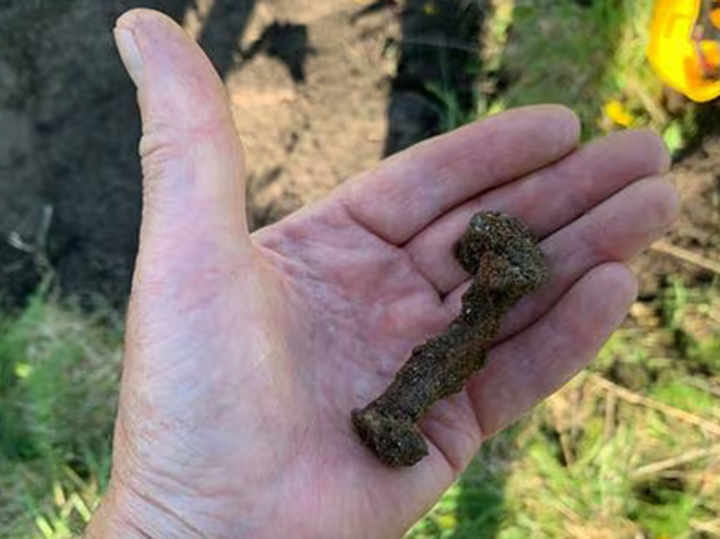Viking ship grave surprised archaeologists: will force them to rewrite history
[ad_1]
Norwegian archaeologists have shared their discovery – they were able to establish what exactly they discovered this summer when the Leck Mound in Trøndelag was discovered, which turned out to be a “ship grave”. Research has shown that the oldest Viking ship ever found has been preserved underground. The find, as stated, will force the history of the ancient Scandinavians to be rewritten.
In the summer of 2023, archaeologists found a mound that caused great excitement in scientific circles, as reported by NRK. The Leck Mound in Trøndelag surprised scientists because, according to project leader Geir Grønnesby, the “ship grave” (Skipsgrava) discovered there was “much older than the previous ones we had encountered.”
Why is she the oldest? Once it became clear what exactly the mound was hiding, it became clear that this burial was made during the Merovingian era – and, therefore, this is the oldest of the “last moorings” of ships in Scandinavia.
Let us remember that leaders and noble people were buried in ships, and with them on their journey to another world they placed utensils, clothing and even means of transportation.
It was thanks to the mounds that people at the end of the 19th century saw what the Viking drakars really looked like, and before that they knew them only from the tapestry of Queen Matilda, the wife of William the Conqueror.
The current research and excavations were carried out on behalf of the National Archives and in cooperation with the municipality of Trøndelag. Scientists took samples of the wood around the nails on the boat to determine the time of burial. It is noted that there are several ship graves from the late 7th century in Rogaland, but this find is most likely even older. After much checking and testing, it turned out that the “ship grave” dates back to around the year 700 and belongs to the Merovingian period.
The discovery, as highlighted by the National Archives, could change the way we think about the entire tradition of ship burials.
Archaeologist Geir Grønnesby explains why this discovery changes the course of history: “We now know that our ancestors could build large ships much earlier than I thought before this discovery.” He describes this as a turning point in history:
“The ship mound reveals the fact that in the past there was closer contact with the outside world. Because when you build ships that are quite large, it’s usually because you have to travel a certain distance with them.”

It has long been known that since the middle of the 7th century, the inhabitants of Trøndelag traded with other countries. And probably goods could be transported on such a ship. This is central to understanding the Viking Age and the development of pre-Viking shipbuilding.
The first ancient ship in Scandinavia was discovered in 1862 during excavations in the swamps near Schleswig, but the first longship found was a boat from Mykleby in Norway. When buried in a mound with the king on board, the drakar was burned. That is why he retreated into the shadows after the discovery of ships in Oseberg and Gokstad.
There is a version that King Audbjorn, who died in the battle of 877, whose name is mentioned in Snorri Sturluson’s Heimskringla, is buried in Mykleby.
The mound was excavated in 1874 by the young archaeologist Anders Lorange, who discovered not only a ship, but weapons and household utensils.
Later, several more mounds with drakars were excavated, which became famous and are now laid up in the Viking Ship Museum in Oslo – these are Norwegian drakars from Tune (1867), Gokstad (1880) and Oseberg (1904).
Now archaeologists have to find out what the other large mounds in Namdalen, where work has not yet begun, hide. Perhaps new discoveries will be made in Namdalen that will also change our understanding of history.
[ad_2]
Source link








